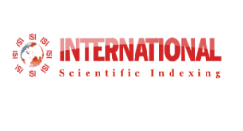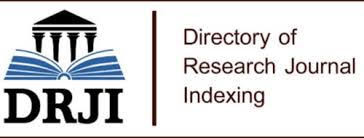Case Report
Mucormycosis Case Series Due To Covid-19 Delta Variant
- Dr. Abdulkadir Sahin
Corresponding author: Dr. Abdulkadir Sahin
Volume: 1
Issue: 12
Article Information
Article Type : Case Report
Citation : Abdulkadir Sahin, Atakan Sarıgul, Merve Zeynep Koday, Hazal Altunok. Mucormycosis Case Series Due To Covid-19 Delta Variant. Journal of Medical and Clinical Case Reports 1(12). https://doi.org/10.61615/JMCCR/2024/NOV027141108
Copyright: © 2024 Abdulkadir Sahin. This is an open-access article distributed under the terms of the Creative Commons Attribution License, which permits unrestricted use, distribution, and reproduction in any medium, provided the original author and source are credited.
DOI: https://doi.org/10.61615/JMCCR/2024/NOV027141108
Publication History
Received Date
08 Oct ,2024
Accepted Date
25 Oct ,2024
Published Date
08 Nov ,2024
Abstract
The COVID-19 pandemic, particularly the Delta variant, has been associated with an increase in opportunistic infections, such as mucormycosis, especially in immunocompromised individuals. This case series presents three patients with type-2 diabetes mellitus who developed mucormycosis after receiving high-dose steroid treatment during their COVID-19 treatment. Despite the best medical and surgical efforts, all three patients faced severe outcomes, highlighting the challenges in managing mucormycosis, particularly in the context of COVID-19.
Each patient exhibited extensive tissue necrosis, primarily affecting the nasal and paranasal regions, with rapid progression to orbital and cerebral involvement in some cases. Radiological evaluations, including CT and MR imaging, revealed extensive sinus involvement and necrotic changes, necessitating aggressive surgical debridement. The management included sinus surgery, maxillectomy, orbital exenteration, and the use of systemic antifungals like amphotericin-B. However, despite these interventions, all patients succumbed to the disease due to the angioinvasive nature of the infection and the complications of their underlying conditions.
The pathophysiology of COVID-19-related mucormycosis is multifaceted. Hyperglycemia, often exacerbated by steroid use, along with the immunosuppressive effects of COVID-19, creates an environment conducive to fungal proliferation. Moreover, endothelial damage and reduced phagocytic function contribute to the angioinvasive behavior of Mucorales. Early diagnosis, close monitoring, and prompt surgical intervention are critical for improving survival rates. This case series underscores the importance of vigilance in at-risk patients and the need for a multidisciplinary approach to manage such infections effectively.
Keywords: Mucormycosis, COVID-19 Delta variant, Type-2 diabetes mellitus, Steroid therapy, Orbital exenteration, Sinus surgery, Amphotericin-B, Angioinvasive infection.
►Mucormycosis Case Series Due To Covid-19 Delta Variant
Abdulkadir Sahin1*, Atakan Sarıgul2, Merve Zeynep Koday3, Hazal Altunok4
1Associate Professor, MD, Atatürk University Research Hospital, Department of Otolaryngology - Erzurum / Turkey.
2Specialist Doctor, MD, Bayburt State Hospital, Department of Otolaryngology - Bayburt / Turkey.
3Specialist Doctor, MD, Yaşar Eryılmaz State Hospital, Department of Otolaryngology - Ağrı / Turkey.
4Specialist Doctor, MD, Erzurum City Hospital, Department of Otolaryngology - Erzurum / Turkey.
Introduction
The Covid-19 pandemic, which we have seen all over the world, was also widely observed in Turkey. Especially the patient clinic secondary to pulmonary involvement of the viral agent was at the forefront. During the pandemic, different treatment protocols were applied until the ideal treatment algorithm was established. Although there is still no agreed-upon definitive protocol, there has been an increase in the number of admissions with mucormycosis that may be secondary to the disease or medical agents. Different ideas about the different physiopathologic pathways that may cause this presentation have been proposed, especially in cases in India. The main ideas are that the hyperglycemic picture secondary to Covid-19 causes a decrease in the phagocytosis ability of mononuclear and polynuclear immune cells, oxygen radicals formed due to the release of iron from transferrin due to acidosis caused by decreased tissue oxygenation cause cellular damage, and endothelial inflammation due to the disease facilitates the adhesion process of mucoral agents (1-4) (8). In addition, steroid treatment accelerates the process, especially due to the increase in phagocytic dysfunction; it can be thought to cause a significant increase in the picture of COVID-19-related mucormycosis(5-7). In this article, we will discuss the clinical picture of 3 patients with known diabetes mellitus type-2 who were followed up in our clinic due to the delta variant of COVID-19 disease and intervened by us with a prediagnosis of mucormycosis.
Case 1
A 38-year-old female patient with known type-2 diabetes mellitus (DM) was hospitalized in an external center due to a COVID-19 delta variant and was given favipiravir and glucocorticoid treatment. She was referred to our hospital with a prediagnosis of mucormycosis by the Ear Nose and Throat (ENT) clinic due to left periorbital and left premaxillary edema that developed during follow-up.
In the detailed ENT examination performed by our clinic, it was seen that the hard palate and soft palate mucosa were resorbed secondary to necrosis and all of the maxillary molar and premolar teeth could move with palpation in addition to the diffuse black-colored crusty appearance in the palatal region. Intense purulent postnasal discharge was observed. In addition, on rhinoscopy, the left inferior turbinate, middle turbinate, bilateral inferior part of the septum, and bilateral nasal cavity floor mucosa had a necrotic black appearance.
Paranasal CT scan showed hyperdense appearances in all paranasal sinuses and in the right maxillary sinus, more prominently in the right maxillary sinus, with localized air-fluid levels. In addition, erosion and localized lytic and irregular appearances on the medial wall of the left maxillary sinus and the walls of the sphenoid sinus on the left were noted. In addition, a 40x38 mm air-dense appearance was observed in the apical segment of the upper lobe of the right lung, and several cavitary lesions in bilateral lung parenchyma were radiologically compatible with mucormycosis lung involvement (Figure 1-3).
Figure 1. Tomographic of mucormycosis in the etmoidal sinuses

Figure 2. Tomographic of mucormycosis in the maxillary sinuses

Figure 3. Tomographic of mucormycosis in the right apex of lung

Right maxillary, bilateral frontal, sphenoidal, and anteroposterior ethmoidal endoscopic sinus surgery and sinus content drainage; left middle and inferior turbinate excision and medial maxilectomy and total septectomy were performed. The bilateral nasal cavity floor hard palate and surrounding tissues were debrided until viable tissue was observed. Orbital exenteration was not considered by the ophthalmology clinic. After debridement, the patient was followed up in the postoperative intensive care unit tracheotomy was opened on the 2nd postoperative day and cardiac arrest developed on the same day. He was accepted as an exit after the intervention.
Case 2
A 46-year-old female patient had a known diagnosis of type-2 diabetes mellitus and was receiving oral antidiabetic treatment. She was hospitalized in an external center due to the Covid-19 Delta variant and routine treatment was started. During follow-up, the patient had low saturation high-dose pulse steroid treatment was started and respiratory complaints were noted to be under control. After the treatment was completed, the patient's control covid test was negative and after a while, inability to breathe from the left side of the nose, proptosis in the eye, decreased sensation in the left half of the face, and decreased movement on the left side of the lip were detected. Oral examination revealed white, millimeter-sized, plaque-shaped lesions covering the left side of the hard and soft palate. In addition, the left rhinoscopy revealed a black, crusty lesion occluding the nasal passage and destroying the middle and inferior turbinates. There was numbness around the eyes and decreased vision and he was referred to our clinic with a prediagnosis of sino-orbital mucormycosis (Figure 4,5).
Figure 4. Appearance of the nazal cavity of the patient on nasal endoscopic examination

Figure 5. Appearance of the soft palate of the patient on oral cavity examination

After hospitalization, we decided to perform an emergency operation. On CT examination, in addition to the fluid-dense appearance filling the left maxillary sinus, a destructed appearance was observed in the middle and inferior turbinate. MR imaging showed myositis in the orbital tissue causing proptosis in the left eye (Figure 6-8).
Figure 6. MR imaging of the patient with involvement of the left ethmoidal sinus and left orbita

Figure 7. Tomografic imaging of the patient with involvement of the left ethmoidal sinus and left orbita

Figure 8. Tomografic imaging of the patient with involvement of the left ethmoidal sinus and left orbita (coronal view)

The patient was operated with a preliminary diagnosis of sino-orbital mucormycosis. Inoperative rhinoscopy revealed a necrotic appearance of the left middle and inferior turbinate. After the excision of the middle and inferior turbinates, the medial wall of the maxillary sinus was necrotic. Subtotal maxilectomy and anterior skull base debridement were performed. Subsequently, left orbital exenteration was performed by the ophthalmology clinic, and the patient was followed up with amphotericin-B treatment in our postoperative clinic and cardiac arrest occurred on the 7th postoperative day. After the intervention, the patient was transferred to the anesthesia and reanimation clinic, and exits occurred during intensive care unit follow-up.
Case 3
A 57-year-old male patient had a known diagnosis of Type 2 diabetes mellitus and had previously received high-dose steroid treatment for the Covid-19 delta variant. The patient underwent tooth extraction due to the development of a dental abscess during follow-up. He was admitted to the emergency department of our hospital with complaints of loss of appetite, nausea, and vomiting 1 week after tooth extraction and was hospitalized in the Internal Medicine Endocrinology clinic with the diagnosis of diabetic ketoacidosis.
Upon the occurrence of redness, swelling, pain, and peripheral facial paralysis in the right half of the face, the patient was consulted by the Neurology clinic. In the physical examination performed by the neurology clinic, it was stated that there was peripheral facial paralysis on the right side, pupillary light reflex could not be obtained on the same side, and eye movements were limited in all directions. The patient's clinic was interpreted in favor of right MCA infarction and cavernous sinus thrombosis by the neurology clinic and anticoagulant and antiaggregant treatment was started. The ENT clinic was consulted due to the progression of orbital edema, lack of response to treatment, and increased mucosal thickness in the right maxillary sinus on CT.
Physical examination of the patient revealed a necrotic lesion approximately 2x1 cm in size on the anterior part of the right hard palate and white-colored irregularly circumscribed lesions on the anterior part of the left hard palate which may be considered in favor of fungal infection. Rhinoscopic examination revealed millimetric white lesions at the base of the septum posterior to the septum in the right nasal cavity, which were evaluated in favor of mucormycosis.
Thereupon, the patient was operated on for urgent debridement and the suspected mucormycosis areas mentioned in the examination were debrided and right-sided maxillary, ethmoid, sphenoid, and frontal endoscopic sinus surgery was performed. During the operation, the left nasal cavity was also evaluated in detail and no pathologic lesion compatible with mucormycosis was detected. The operation site was irrigated with diluted amphotericin-B and the operation was terminated and the patient was transferred to the anesthesia and reanimation intensive care unit intubated. The patient's treatment was organized by the infectious diseases clinic in terms of mucormycosis and the patient was evaluated daily by the ENT clinic in terms of new lesion development. In the postoperative intensive care unit follow-up, cerebral mucormycosis was detected, no additional surgery was planned and iv treatment was continued. Exitus occurred in the 4th postoperative month in the intensive care unit.
Conclusion
Individuals with poorly managed diabetes mellitus (DM) and COVID-19, particularly in warm climates that promote the growth of Mucorales, face an elevated risk of contracting mucormycosis. Even with intensive treatment, including high doses of AmBisome and surgical interventions, those with uncontrolled blood sugar levels still experience high mortality rates and poorer prognoses.
Mucorales are capable of surviving in high temperatures, which is why infections are more common during the hot, dry summer months when humidity is low. This trend has been notably observed in India, where the prevalence of mucormycosis is particularly high (9).
Inhalation of fungal spores and repeated ingestion of contaminated substances are the most common ways Mucorales is acquired in immunocompromised individuals, such as those with diabetes, or occasionally through traumatic skin injuries (10).
When reviewing the literature, it becomes evident that patients diagnosed with diabetes, particularly those treated with high-dose steroids due to the COVID-19 Delta variant, are significantly more susceptible to mucormycosis and similar fungal infections (e.g., Rhizopus, Absidia), which are commonly found in nature. These patients are especially vulnerable to these infectious agents, which exhibit an angioinvasive spread pattern. The most crucial factor in improving survival rates in what is generally a fatal condition is early suspicion of the diagnosis and prompt, aggressive surgical intervention. It can rapidly spread from the nasal cavity to the orbit and brain within hours, potentially leading to much more dramatic surgical outcomes.
Therefore, at-risk patients should be closely monitored, with thorough examinations of the oral and nasal cavities. If any suspicion arises, the patient should be referred quickly to the relevant clinical departments. Careful debridement surgery should be performed, followed by consultation with the infectious diseases team to initiate appropriate local and systemic antifungal therapy.
- Pal R, Banerjee M. (2020). COVID-19 and the endocrine system: exploring the unexplored. J Endocrinol Invest. 43(7): 1027-1031.
- Pal R, Bhadada SK. (2020). COVID-19 and diabetes mellitus: an unholy interaction of two pandemics. Diabetes Metab Syndr Clin Res Rev. 14(4):513-517.
- Rehman K, Akash MSH, Liaqat A, Kamal S, Qadir MI, Rasul A. (2017). Role of interleukin-6 in development of insulin resistance and type 2 diabetes mellitus. Crit Rev Eukaryot Gene Expr. 27(3): 229-236.
- Pal R, Bhadada SK. (2020). COVID-19 and diabetes mellitus: an unholy interaction of two pandemics. Diabetes Metab Syndr Clin Res Rev. 14(4): 513-517.
- Chinn RY, Diamond RD. (1982). Generation of chemotactic factors by Rhizopus oryzae in the presence and absence of serum: relationship to hyphal damage mediated by human neutrophils and effects of hyperglycemia and ketoacidosis. Infect Immun. 38(3): 1123-1129.
- Pretorius E, Kell DB. (2014). Diagnostic morphology: biophysical indicators for iron-driven inflammatory diseases. Integr Biol. 6(5): 486-510.
- Habib HM, Ibrahim S, Zaim A, Ibrahim WH. (2021). The role of iron in the pathogenesis of COVID-19 and possible treatment with lactoferrin and other iron chelators. Biomed Pharmacother. 136: 111228.
- John TM, Jacob CN, Kontoyiannis DP. (2021). When uncontrolled diabetes mellitus and severe COVID-19 converge: the perfect storm for mucormycosis. J Fungi. 7(4): 298.
- Manoj Kumar, Devojit Kumar Sarma, Swasti Shubham, Manoj Kumawat, Vinod Verma, Birbal Singh, Ravinder Nagpal, RR Tiwari. (2021). Mucormycosis in COVID-19 pandemic: Risk factors and linkages, Current Research in Microbial Sciences. 2: 100057.
- Mahalaxmi I, Jayaramayya K, Venkatesan D, Subramaniam MD, Renu K, Vijayaku-mar P, Narayanasamy A, Gopalakrishnan AV, Kumar NS, Sivaprakash P, Rao K, RS S, Vellingiri B. (2021). Mucormycosis: An opportunistic pathogen during COVID-19. Environ Res. 201: 111643.
Download Provisional PDF Here
PDF




p (1).png)




.png)




.png)
